Ghana PMI sees best spell of growth since survey began in 2014
The Ghanaian economy is experiencing its best spell of growth for some years in 2017. Newly launched PMI data signalled a strong rise in new orders during September as customer demand recovered further from difficulties in previous years. The data suggest that GDP growth continued to accelerate in the third quarter, building on a strong start to the year.
PMI hits record high
The Stanbic Bank Ghana PMI, compiled by IHS Markit and released for the first time in September 2017, provides timely updates on the health of the country"s private sector. The latest findings showed the strongest improvement in business conditions since the survey began in January 2014, thanks to sharp rises in output and new orders and record job creation during September.
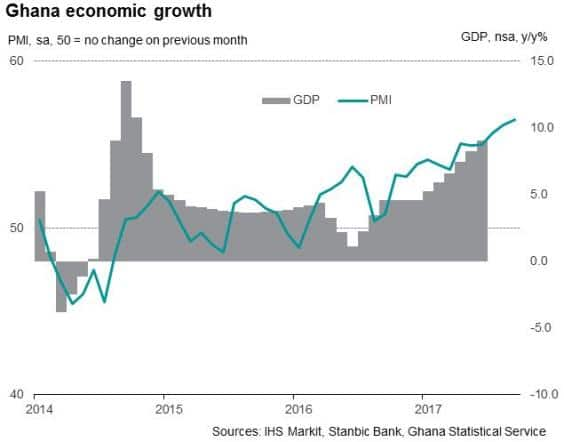
The PMI data have acted as a reliable advance indicator of official GDP figures, which were recently updated for the second quarter of the year. A 9.0% year-on-year increase in GDP was the best performance since the economy rebounded from contraction in the third quarter of 2014.
With PMI data now available for the whole of Q3 as well, the survey data indicate that the GDP figures will show a further pick-up in the rate of growth in the economy.
For 2017 as a whole, IHS Markit currently forecasts growth of 5.7%, which would be the best performance since 2013.
Business conditions decline in 2014
The current positive business environment recorded by the PMI is in marked contrast to the situation at the start of data collection in 2014, when the PMI fell into contractionary territory. This was largely due to a sharp depreciation in the value of the Ghanaian cedi against the US dollar. Between January 1st 2014 and its low point on August 20th of that year, the cedi lost 65% of its value against the US dollar.
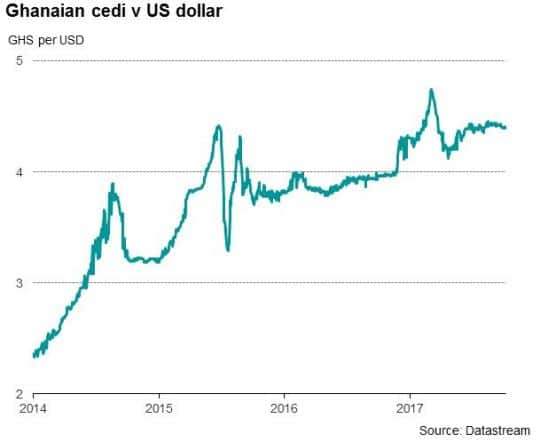
The depreciation of the currency, allied to reports of 'dollarisation' in the economy, was the key factor behind sharp rises in input costs and output prices, as reported by PMI panel members at the time. Strong price rises meant that customers were often unable to afford the products offered by companies in Ghana, thereby resulting in substantial reductions in new business and output. In fact, output decreased in each of the first eight months of data collection during 2014.
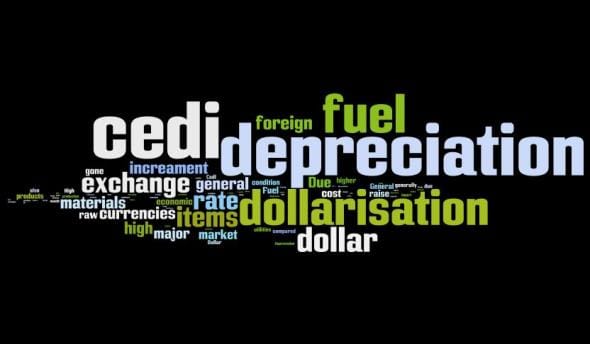
The government turned to the IMF for support, and the agreement of a programme stabilised the currency and helped to bring down inflation.
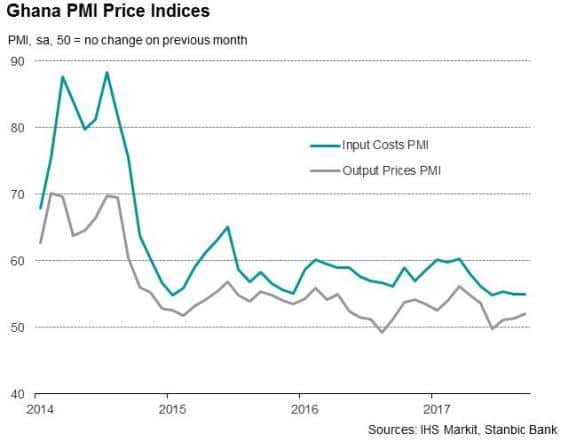
Power supply issues affect 2015
The IMF assistance appears to have been instrumental in generating a brief period of expansion in late-2014, but the Ghanaian private sector returned to contraction in March 2015. This time the chief cause of falling output was power supply issues. According to PMI respondents, power cuts were a particular problem during the first half of 2015 and output fell continuously between March and June as a result. Firms also reported rising backlogs of work as they were unable to progress projects.
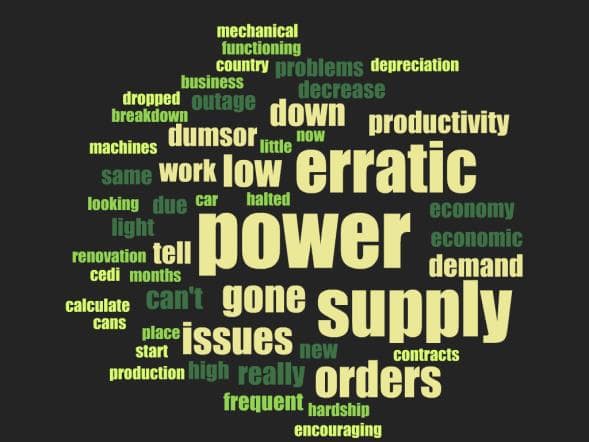
The economy underwent a period of relative stability during 2016, paving the way for the pick-up in growth that has been recorded during 2017. With clients seemingly more and more willing to commit to new projects, and inflationary pressures relatively muted, the outlook for the rest of the year appears positive.
The PMI data for October will be released on November 3rd.
Andrew Harker | Economics Associate Director, IHS Markit
Tel: +44 149 1461016
andrew.harker@markit.com
